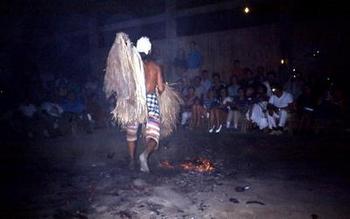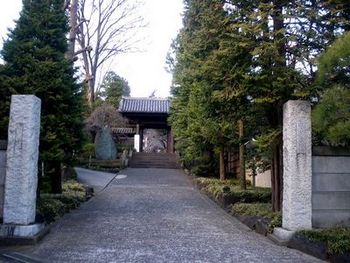Firewalking Traditions
Firewalking is an act during which a person walks over a layer of hot ambers or stones. It has been part of many cultures. Usually it is seen as an act of faith, courage.
 Embers
Embers
Let's begin in Europe. People living in the villages of Ayia Eleni, Langadas, Melike, Mavrolefke and Kerkine in northern Greece and those in several villages on the Strandzha mountains of southern Bulgaria are the descendants of the people who arrived there during Greek-Turkish exchange of population in 1923.
They are known for their firewalking tradition called Anastenaria. Local Orthodox Christians observe the unique ritual period lasting from the 26th of October until the 15th of August.
There are two major events in this period. One is organized in January and one in May. They are dedicated to Saint Constantine and Saint Helen. These events include procession, music, dance and an animal sacrifice. Village community which organizes the Anastenaria is headed by the "group of twelve". Women make the majority in this group.
Communities participating in the Anastenaria have shrines known as the "konaki". In some villages the konaki can just be a room in the house set for the occasion. Icons, the red kerchiefs called "semadia" or "simadia" ("signs" of the saints), oil offerings, incense and lighted candles are kept there.
People gather in the konaki on the eve of Saint Constantine and Saint Helen day which is on the 21st of May. Local musicians perform using the traditional Thracian drum and lyre. People dance. After some time they enter in some kind of trance. They believe it is under influence of Saint Constantine.
In the morning of the Saints' day people again meet at the konaki. From there they go to a well where they will be blessed with the holy water. After that some animals are sacrificed. The way it is done differs from community to community. Let's take for example village of Ayia Eleni. There the animal sacrificed must be more than one year old. Its age must be of odd number. The best is seven. The animal must be unmarked. It can not be a castrated one either.
In the evening of the same day. People gather at the konaki again. They dance. Then a fire is lit somewhere close to the building. People participating in the ritual or as they are called the "anastenarides" hold the icons and dance around the fire. After that some of them, as believed with the help of saint, start firewalking.
The same ritual is organized during the festival of Saint Athanasius in January. What differs from the above mentioned ritual in May is the fact that firewalking is done indoors.
What about the origin of the Anastenaria? Well, there are several legends. Here is one of them. In the middle ages the church of Saint Constantine in Kosti (now in Bulgaria) was set on fire. Voices by saints calling for help were heard from inside the church. Brave villagers enter the church to help. They survived with the help of saints.
Most of Greek scientists do not agree with the story. They believe that the origins of the ritual can be found in ancient cult of Dionysus.
Hindu population of south India but also part of their diaspora in South Africa, Malaysia and Singapore organize the Thimthi festival.
The Thimthi (Theemidhi, Theemithi) festival is a firewalking event in the month of Aipasi (Aippasi) of the Tamil calendar. In the Gregorian calendar it is in October and November.
This firewalking festival is honouring Draupadi. She was the daughter of King Drupada of Panchāla. She was the wife of the five Pandavas. Hindu people believe that she is the incarnation of Goddess Māri or as she is also known "Mariamman" (Maariamma) or "Mother Mari". Some people just call her Amman (in Tamil mother).
 Mariamman (sitting in the middle)
Mariamman (sitting in the middle)
During the Thimthi ordinary people and professional actors perform certain parts of the Mahābhārata. Mahābhārata and the Rāmāyana are two major Sanskrit epics of ancient India.
A week before the firewalking people pray to goddess Periyachi. Sometimes she is considered to be Kali. People ask her blessing and good luck during the festival.
The second event of the festival is symbolic marriage between Arjuna and Draupadi. Arjuna (Arjun, Arjunaa) is the archer. People often call him Jishnu - the undefeatable. He was a friend and brother-in-law of Lord Krishna.
 Arjuna
Arjuna
The next ritual is symbolic sacrifice of Hijra. The real sacrifice was done before the Mahabharata war to secure success to the Pandavas.
Participants in the festival carry milk pots and do Kumbiduthandam (lying with face down after every step) and Angapirathatchanam (rolling around the temple area).
People use the milk they brought to wash the statue of Mariamman. It is believed that by doing so they wash their sins away.
Two days before the Thimthi there a big procession with a silver chariot. It is done to commemorate the battle which lasted for 18 days and finished with the Pandavas victory.
Now, let's turn to the firewalking performed at this festival. The fire pit is prepared by the people in the night before the final day of festival.
The first who does the firewalking is the priest. He also carries a pot of Karagam (sacred water) on his head. Men who follow the priest are doing the firewalking to show the strength of their faith or fulfil certain promise. The firewalking ritual starts at about 4 am and ends at about 11 am.
For the next of firewalking events let's now move to the island of Bali in Indonesia. The Sanghyang dance or the Dance of Spirits is performed there. Local people believe that by performing it you can invite the gods or sacred spirits to enter your body and put you in the state of trance.
The event is influenced by the pre-hindu belief that the Holy Spirit can work through the dancer and that way cure the sick person.
The dance is performed in the the fifth or sixth month of the Balinese traditional calendar. They decided to do so as they believe that in that part of year illnesses and natural disasters are more common.
There are 6 variations of Sanghyang dance - Sangyang Dedari, Sanghyang Deling, Sanghyang Jaran, Sanghyang Bojog, Sanghyang Celeng and Sanghyang Grobogan.
Let's describe the Sanghyang Jaran. During this dance a boy or a priest in the state of trance dances on kind of toy horse called "jaran". He dances around the fire made of coconut husks. The power of music moves him further. He then dances on the fire.
 Sanghyang Jaran
Sanghyang Jaran
Participants in the Sanghyang have special status in their communities. They dance during the ritual but they have never learned it before. If asked, they can not remember what they did during the ritual.
Firewalking ceremonies are organized all over Polynesia for centuries. Let's take for example Fiji. Villages known for firewalking tradition are Dakuibeqa, Dakuni, Soliyaga and Rukua. They are located on the island of Beqa. This island with the area of 36 square kilometers is just a few kilometres away from Fiji capital Suva and the main Fiji island of Viti Levu.
What differs firewalking in Fiji from that in for example Greece is the fact that it is performed on hot stones. As to the local belief Tui Qalita was the first person who was able to walk barefoot on hot stones.
This ability is the present from a god. Tui Qalita was first offered to spend three day buried in a lovo pit. But Tui Qalita was not brave enough to check this present. The participants in firewalking ritual are usually descendants of local chiefs.
Hindu community of Fiji also performs firewalking rituals. They are similar to those in India.
The Japanese have their own firewalking festival. It is called the Hiwatari Matsuri or Fire Festival. It is organized on the second Sunday in March at the Mount Takao, west of Tokyo. The festival is held in almost 1300 years old Yakuoin temple.
 Yakuoin temple
Yakuoin temple
During the festival the ascetic priests walk barefoot on the layer of hot coals. When walking they scatter some salt. Visitors can join the priests too.
Before the firewalking ritual there are several smaller events. One of them is the burning of thousands of wooden tablets called "nadegi". On each tablet there is a name of one visitor. It is believed that by burning the tablets those whose name is written on them are purified.
In Vietnam there is a wedding tradition according to which the bride is supposed to walk over hot coals before entering the groom's house. It is believed that this act wards off the evil spirits.
Firewalking exists in Africa too. The !Kung tribe of the Kalahari Desert in south of the continent perform firewalking rituals as part of healing process.
Nowadays New Age and other similar movements include firewalking as part of their rituals.